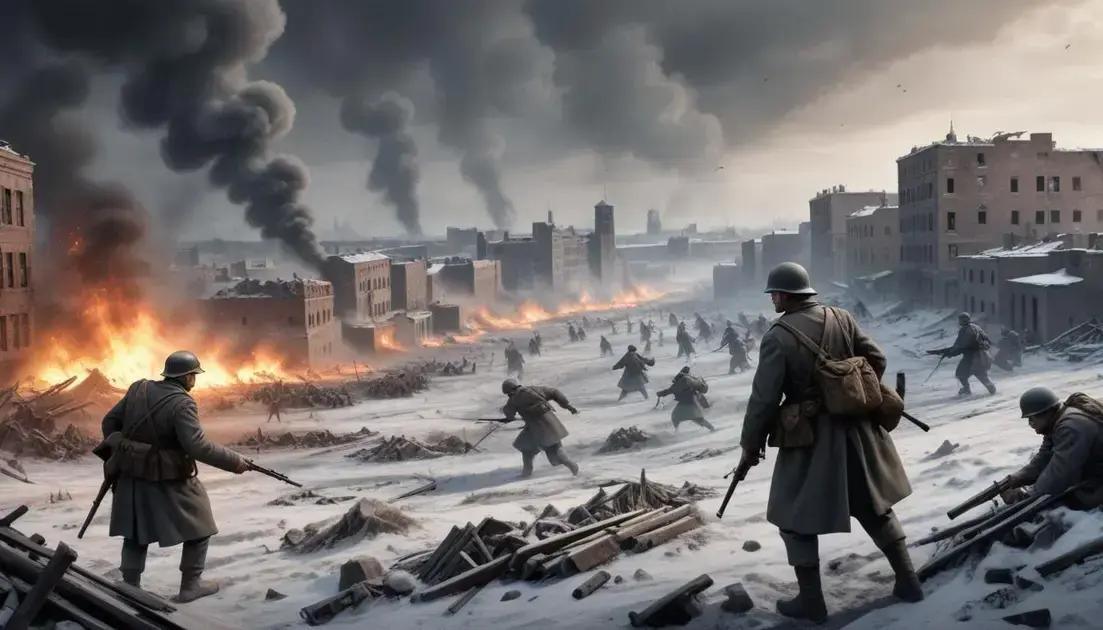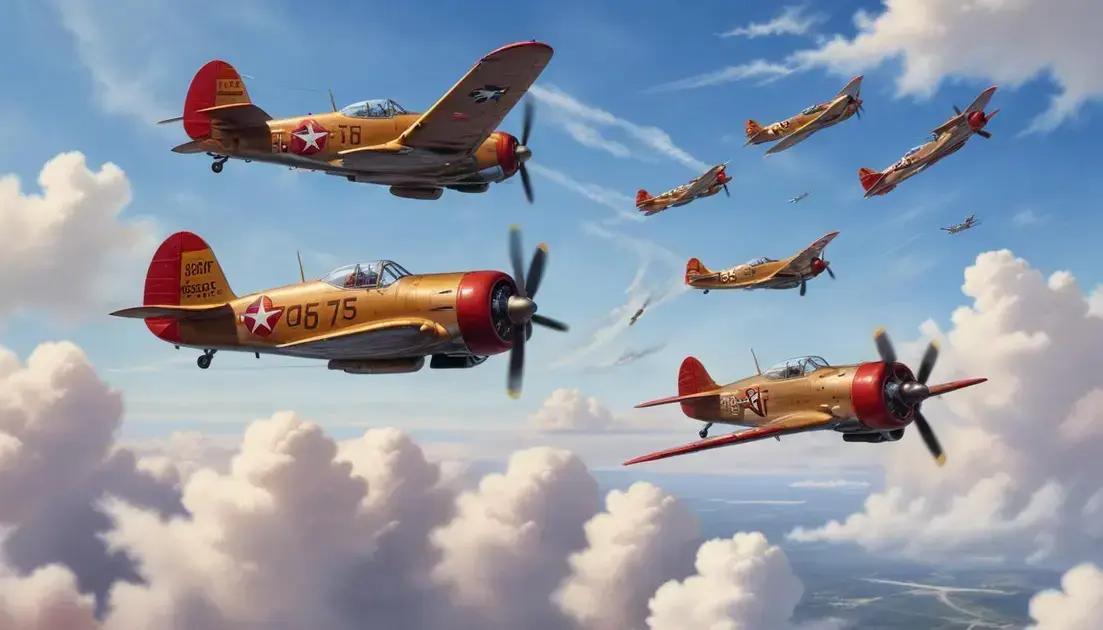
Battle of Stalingrad: The Turning Point in World War II
The Battle of Stalingrad was a critical conflict during World War II, highlighting the resilience of Soviet forces and their strategic counter-offensives against the German army. Lasting from August 1942 to February 1943, it marked a significant turning point in the war, leading to the encirclement and defeat of the German Sixth Army. The aftermath had lasting effects, boosting Soviet morale and altering the course of the war. Stalingrad remains a symbol of sacrifice and a key study in military strategy and human determination in the face of adversity.
Let’s dive into the **Stalingrad** battle, a pivotal moment that reshaped the outcome of World War II. Curious how this fierce confrontation unfolded and why it remains a landmark in history? Keep reading!
Historical Context
The Battle of Stalingrad took place during World War II between August 1942 and February 1943. This battle was significant for several reasons. First, it marked a turning point in the war. The German army aimed to capture the city of Stalingrad, an important industrial center. They thought it would help them control the entire Eastern Front.
Stalingrad was under severe attack, with both sides suffering heavy casualties. The German forces were well-equipped and experienced. But they underestimated the determination of the Soviet troops defending the city.
The Soviet Union, led by General Vasily Chuikov and other leaders, used various tactics to hold their ground. They moved swiftly, counterattacking when the Germans advanced. The harsh winter also played a crucial role. Soviet troops were better prepared to withstand the bitter cold than the Germans.
As the battle continued, the tide turned. The Soviets encircled the German Sixth Army in a daring move. Many Germans were trapped and cut off from supplies. This shift in momentum was crucial, showing that the Soviets could repel the Nazis and initiate their own offensive.
The lessons learned at Stalingrad shaped future tactics in World War II. It illustrated how resilience and strategy could affect the outcome of a battle. The defeat was a huge blow to Nazi Germany, impacting morale and future plans.
The Brutal Siege
The Siege of Stalingrad was one of the bloodiest battles in history. It lasted over five months, from August 1942 to February 1943. The German army aimed to capture the city and crush Soviet resistance.
During the siege, the fighting was fierce and brutal. Both sides faced extreme conditions. The German troops relied heavily on air support and superior tactics. But the Soviets used the city’s ruins to their advantage. They fought hard, often block by block.
As the battle raged on, civilian lives were devastated. Many families were trapped, caught in the crossfire. Food and supplies dwindled quickly. Starvation and illness became major threats alongside the constant bombing.
Soviet soldiers were known for their resilience. They used clever strategies to defend the city. Snipers hid among the ruins, picking off enemy soldiers. Close-quarter combat was common. The fighting was intense and personal.
The winter added to the suffering. Soldiers on both sides endured freezing temperatures. Many didn’t have proper clothing or shelter. This only intensified the struggle, showcasing the terrible cost of war.
By early 1943, the situation became dire for the German army. Supplies ran low, and morale dropped. The Soviets, however, were determined to hold their ground. With reinforcements and renewed strength, they prepared a counter-attack.
Key Figures
Several key figures played crucial roles during the Battle of Stalingrad. Each made a significant impact on the battle’s outcome. Let’s look at some of these essential leaders.
General Friedrich Paulus was the commander of the German Sixth Army. He was confident at the start and believed Stalingrad would quickly fall. However, he faced difficulties as the battle dragged on. Paulus struggled to maintain supply lines and morale among his soldiers.
General Vasily Chuikov led the Soviet defense in Stalingrad. He was determined to hold the city against the German onslaught. Chuikov adopted a strategy focused on close combat. This proved vital in countering the German tactics and keeping the city under Soviet control.
Another key figure was Marshal Georgy Zhukov. He was a high-ranking Soviet general who devised a critical plan for counter-offensives. His strategies were essential for turning the tide of the battle. Zhukov’s leadership helped the Soviets encircle and ultimately defeat the German forces.
Lastly, let’s not forget the countless soldiers on both sides who fought bravely. Their sacrifices and determination shaped the battle’s legacy. Their stories remind us of the human cost of war.
Battle Strategies
The Battle of Stalingrad featured several key strategies from both the German and Soviet forces. Each side aimed to gain the upper hand in this crucial conflict.
The Germans used a tactic called Blitzkrieg, or lightning war. This involved fast and coordinated attacks with air and ground troops. They aimed to take advantage of speed and surprise. Initially, this tactic worked well, allowing them to advance quickly into Stalingrad.
However, the Soviets adapted their strategies as the battle progressed. They fought fiercely in urban settings and used defensive tactics. Soviet forces often drew the Germans into close quarters. This strategy reduced the German advantage in mobility and heavy equipment.
Soviet General Chuikov emphasized the importance of staying put. His troops engaged in relentless street fighting. They used the rubble of the city to hide and strike back at the enemy. This made it challenging for the Germans to maintain control.
In late 1942, the Soviets launched a counter-offensive called Operation Uranus. This plan aimed to encircle the German Sixth Army. It involved attacking weaker Romanian and Italian divisions that flanked the Germans. The success of this operation was a turning point in the battle.
Both sides faced tough conditions during the battle. Harsh winter weather also impacted their strategies. Supplies were limited, making logistics a key concern as the fight continued.
Aftermath and Significance
The aftermath of the Battle of Stalingrad was significant for both the Soviet Union and Germany. It marked a major turning point in World War II. The defeat of the German Sixth Army was a crushing blow for Hitler’s plans.
After the battle, the Soviet Union gained confidence. They proved that they could defeat the Nazis in a major conflict. This encouraged more enlistments and support for the war effort. The victory at Stalingrad boosted morale not just in the military but among civilians as well.
For Germany, the loss was devastating. They lost a large number of troops and resources. The defeat forced Hitler to rethink his strategies on the Eastern Front. This battle weakened Germany’s overall position in the war.
The battle also changed the course of the war. Soviet forces began a series of offensives after Stalingrad. They pushed back the German army, reclaiming lost territory. The victory at Stalingrad set the stage for this counter-offensive.
On a broader scale, Stalingrad showed the importance of strategy and morale in warfare. It highlighted how determination and adaptability could impact battle outcomes. Stalingrad remains a symbol of resilience in the face of overwhelming odds.
Today, the battle is studied in military academies around the world. It serves as a lesson in leadership, strategy, and the human cost of war. Memorials and museums honor those who fought and died during this historic fight.
Conclusion
In conclusion, the Battle of Stalingrad was a crucial turning point in World War II. It demonstrated the strength and resilience of the Soviet forces against adversity. The battle not only changed the course of the war but also showed how strategy and determination can influence outcomes.
The aftermath of Stalingrad had a lasting impact on both the Soviet Union and Germany. For the Soviets, it marked a boost in morale and a shift toward victory. For the Germans, it was a significant defeat that strained their resources and plans.
Today, the lessons from Stalingrad continue to resonate. They remind us of the sacrifices made during times of great conflict. Understanding this battle helps us appreciate the complexities of war and the importance of human resilience. By studying Stalingrad, we honor those who fought and learn valuable lessons for the future.


